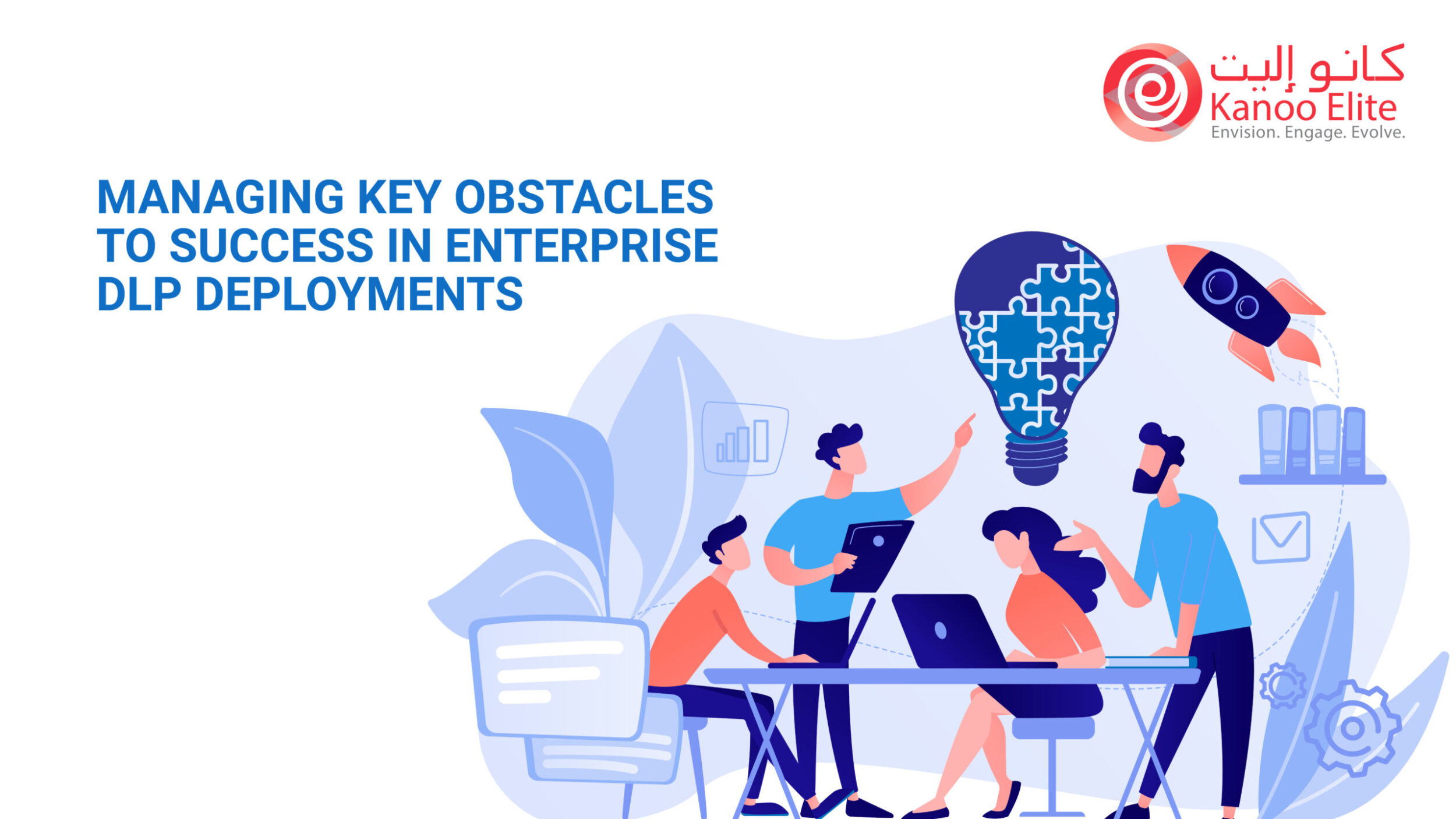Enterprise DLP solutions represent a crucial means of protecting sensitive information from disclosure — whether intentional or inadvertent — and for identifying sensitive data assets that require such protection. There’s much to consider when it comes to building an enterprise DLP solution, from understanding where your data exists to proper data classification, accounting for shadow IT, and more. First and foremost, you need to start with a clear data loss prevention strategy, evaluate existing systems and solutions, perform a complete data audit, and then take integration into consideration before you even begin the process of building a DLP solution.
Through this whitepaper, we will discuss strategies that Enterprise DLP solutions need to follow for provisioning of an effective and highly valued projects that will be scalable and sustainable within their intended deployments.
Responsibility for Deployments beyond IT Security
IT security teams do not have the sole responsibility to implement or mandate the deployment of any business- focused security solution. They simply cannot accept or refuse risk on behalf of any business unit. The reality is that enterprise DLP is a non-transparent business control that addresses:
- Regulatory compliance
- Intellectual property protection
- Organizational process and procedure quality
These elements put enterprise DLP deployment responsibility squarely within the business teams, not the technology teams.
Focus on Specific Business Issues
The key to successful DLP policy development and deployment is to start slowly and build experience with different data owners, gathering momentum over time. Failed stages of a DLP deployment can also provide valuable lessons and key feedback that can be used to revise policies for data, as well as procedures for implementing DLP, or to employ insights into how to better increase user awareness to the value of securing data. Enterprise DLP deployments need to be focused on specific business issues, and they need to be driven by actionable and funded business requirements.
Leverage the Leadership Team to Implement Deployments
Enterprise DLP deployments generate a certain level of events that require review and action. This requires additional staffing from the organizational units responsible for various datasets. Some policies will only require periodic review of alerts every few days, or even just once a week or month, because of the level of impact and risks associated with them, while others will require real- time review of DLP events. Organizations will require varying levels of staffing depending on the number and severity of events generated by an enterprise DLP solution.
Analyse Data
Enterprise DLP deployments can be streamlined by having a better high-level or broad understanding of the data within the organization. This information can also be used to identify which data should potentially be targeted for the first and second waves of deployment —based on an established risk profile.
Qualifiers and disqualifiers are the basic building blocks of all enterprise DLP solutions. The greater number and quality of these qualifiers and disqualifiers will increase the overall fidelity of a rule and have the lowest possible rate of false-positive results.
- Qualifiers are characteristics that increase accuracy in the processes of identifying the targeted data by verifying the content matches’ known syntax or values.
- Disqualifiers are characteristics that increase the accuracy in the processes of identifying the targeted data by verifying that the content does not match known syntax or values that have been identified as not being those of the actual data.
The goal is to create high-quality qualifiers and disqualifiers that increase the overall fidelity and flexibility of the enterprise DLP deployment.
Analyse Limitations of Enterprise DLP Solutions and Your Organization
Many organizations experience failed or stalled enterprise DLP deployments because they attempted to deploy these solutions outside of currently supported product deployment use cases. It is critically important for organizations to assess their own individual levels of maturity, senior management support, available resources, and patience before attempting to implement more-advanced scenarios such as:
- Attempting to initiate a full-scale, top- to-bottom and data-classification-based enterprise DLP deployment to classify and to provide entitlement-based protections using enterprise digital rights management.
- Planning to implement a granular, controls-based enterprise DLP deployment that requires complex business process integration.
Developing a Successful DLP Policy prior to Deployment
Data loss prevention (DLP) Policy is an approach that seeks to provide a baseline for the effective deployment of an Enterprise DLP. The following pointers discuss the requirements for an effective DLP Policy:
- Classifying and interpreting data—Identify which information needs to be protected.
- Allocate roles—Clearly define the role of each individual involved in the data loss prevention strategy.
- Begin by securing the most sensitive data—start by selecting a specific kind of information to protect, which represents the biggest risk to the business.
- Automate as much as possible—the more DLP processes are automated, the broader you’ll be able to deploy them in the organization.
- Use anomaly detection—Integrate modern DLP tools using machine learning and behavioural analytics.
- Involve leaders in the organization—Management is key to making DLP work.
- Educate stakeholder—Invest in making stakeholders and users of data aware of the policy, its significance and what they need to do to safeguard organizational data.
- Documenting DLP strategy—Documenting the DLP policy is required by many compliance standards providing clarity, both at the individual and organizational level, as to what is required and how the policy is enforced.
- Establish metrics—Measure DLP effectiveness using metrics like percentage of false positives, number of incidents and Mean Time to Response.
Deploying an Enterprise Data Loss Prevention on endpoints requires a careful roll-out. Kanoo Elite has years of experience in information security, physical security, and risk management. We are one of the world’s premier authorities providing data security technologies, including DLP, managing issues ranging from vulnerabilities and threats, to risk management frameworks, to major application security. Kanoo Elite is a next-generation providing cloud-based data protection platform understanding and support, endpoint detection and response, and user and entity behaviour analytics to effectively implement an Enterprise Data Loss Prevention System.



